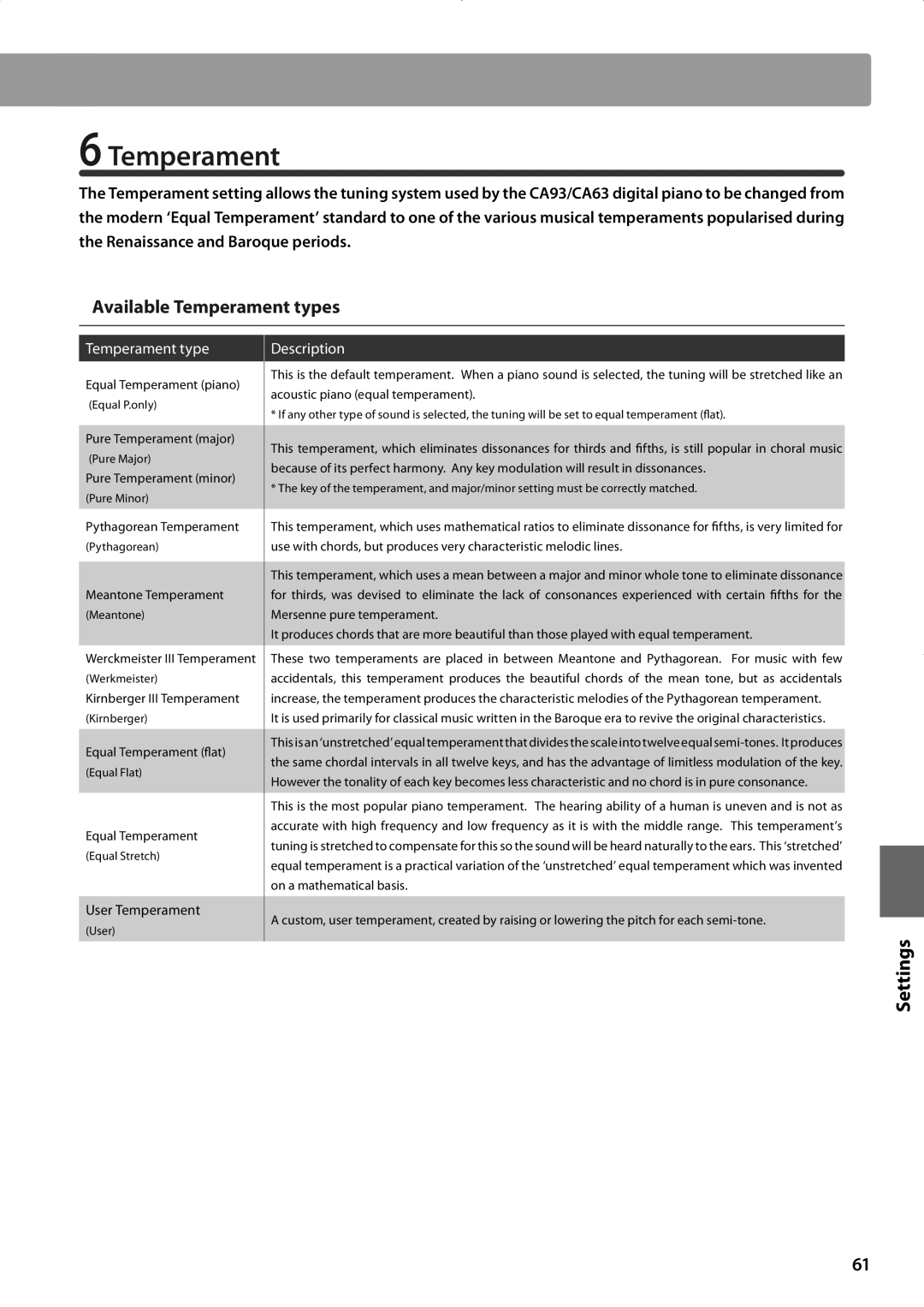
6Temperament
The Temperament setting allows the tuning system used by the CA93/CA63 digital piano to be changed from the modern ‘Equal Temperament’ standard to one of the various musical temperaments popularised during the Renaissance and Baroque periods.
Available Temperament types
Temperament type
Description
Equal Temperament (piano)
(Equal P.only)
Pure Temperament (major)
(Pure Major)
Pure Temperament (minor)
(Pure Minor)
Pythagorean Temperament
(Pythagorean)
Meantone Temperament
(Meantone)
Werckmeister III Temperament
(Werkmeister)
Kirnberger III Temperament
(Kirnberger)
Equal Temperament (flat)
(Equal Flat)
Equal Temperament
(Equal Stretch)
User Temperament
(User)
This is the default temperament. When a piano sound is selected, the tuning will be stretched like an acoustic piano (equal temperament).
* If any other type of sound is selected, the tuning will be set to equal temperament (flat).
This temperament, which eliminates dissonances for thirds and fifths, is still popular in choral music because of its perfect harmony. Any key modulation will result in dissonances.
* The key of the temperament, and major/minor setting must be correctly matched.
This temperament, which uses mathematical ratios to eliminate dissonance for fifths, is very limited for use with chords, but produces very characteristic melodic lines.
This temperament, which uses a mean between a major and minor whole tone to eliminate dissonance for thirds, was devised to eliminate the lack of consonances experienced with certain fifths for the Mersenne pure temperament.
It produces chords that are more beautiful than those played with equal temperament.
These two temperaments are placed in between Meantone and Pythagorean. For music with few accidentals, this temperament produces the beautiful chords of the mean tone, but as accidentals increase, the temperament produces the characteristic melodies of the Pythagorean temperament.
It is used primarily for classical music written in the Baroque era to revive the original characteristics.
This is an ‘unstretched’ equal temperament that divides the scale into twelve equal
This is the most popular piano temperament. The hearing ability of a human is uneven and is not as accurate with high frequency and low frequency as it is with the middle range. This temperament’s tuning is stretched to compensate for this so the sound will be heard naturally to the ears. This ‘stretched’ equal temperament is a practical variation of the ‘unstretched’ equal temperament which was invented on a mathematical basis.
A custom, user temperament, created by raising or lowering the pitch for each
Settings
61
